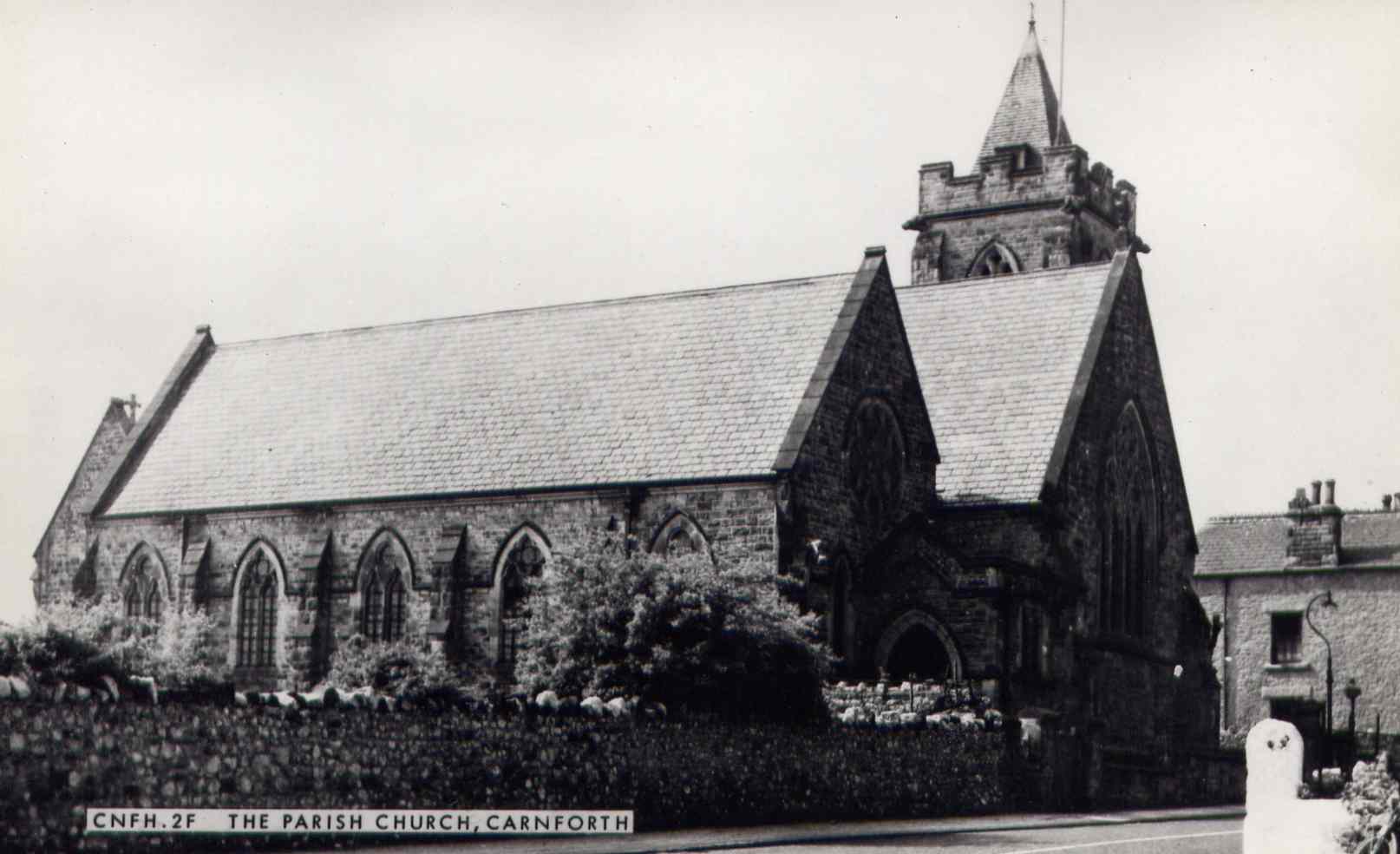 |
The Parish of Carnforth |
 |
 | |
Carnforth appears in the Domesday Book where it was known as 'Chreneforde', located in a slight valley where the river Keer enters the Kent estuary. It is believed this name was derived from its position by the ford crossing the River Keer, meaning 'a ford where cranes frequented'.
It was originally part of the Parish of Bolton le Sands, but was transferrred to the parish of Warton in 1208.
In the past it was important centre of shipping, evidence of which is occasionally revealed by the shifting sands. It is also known to have had ancient iron works.
The coming of the railway in 1846 brought a new prosperity to the town. The railway was further expanded later to form a junction between three lines. The presence of the railway allowed a iron works to be established, which by 1870, was operating four blast furnaces. The iron works remained in operation until 1931.
Originally Carnforth was part of the older neighbouring parish of Bolton le Sands before being transferred to the parish of Warton in 1208. Earlier records for residents of Carnforth will be found in the registers of the parish church of Warton. With its growth following the arrival of the railway, a chapelry was established in the town. Eventually the town was granted parish status in its own right.
| Carnforth Home & Contents | ©Lancashire OnLine Parish Clerks | Lancashire Home |